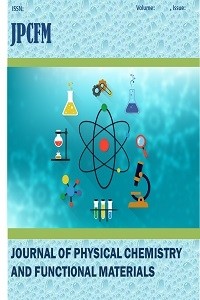Analisis of Half Sphere receiver Model in molecular Communucation Through Diffusion
Analisis of Half Sphere receiver Model in molecular Communucation Through Diffusion
molecular communication, nano network, receiver,
___
- A. Akkaya, H. B. Yilmaz, C. B. Chae, and T. Tugcu, “Effect of receptor density and size on signal reception in molecular communication via diffusion with an absorbing receiver,” IEEE Commun. Lett., vol. 19, no. 2, pp. 155–158, 2015.
- A. Einolghozati, M. Sardari, and F. Fekri, “Capacity of diffusion-based molecular communication with ligand receptors,” 2011 IEEE Inf. Theory Work. ITW 2011, pp. 85–89, 2011.
- L. Felicetti, M. Femminella, and G. Reali, “Directional receivers for diffusion-based molecular communications,” IEEE Access, vol. PP, no. c, p. 1, 2018.
- H. B. Yilmaz, A. C. Heren, T. Tugcu, and C. Chae, “Three-Dimensional Channel Characteristics for Molecular Communications With an Absorbing Receiver,” 2014.
- Y. Deng, A. Noel, M. Elkashlan, A. Nallanathan, and K. C. Cheung, “Modeling and Simulation of Molecular Communication Systems with a Reversible Adsorption Receiver,” IEEE Trans. Mol. Biol. Multi-Scale Commun., vol. 1, no. 4, pp. 347–362, 2015.
- Y. Deng, A. Noel, M. Elkashlan, A. Nallanathan, and K. C. Cheung, “Molecular Communication with a Reversible Adsorption Receiver,” EEE ICC 2016 - Commun. Theory Mol., 2016.
- W. Guo et al., “Molecular communications: Channel model and physical layer techniques,” IEEE Wirel. Commun., vol. 23, no. 4, pp. 120–127, 2016.
- A. W. Eckford, “Nanoscale Communication with Brownian Motion,” in 41st Annual Conference on Information Sciences and Systems, 2007, pp. 160–165.
- F. N. Kiliçli, M. T. Özşahİn, H. B. Yilmaz, M. Ş. Kuran, and T. Tuğcu, “HaberleşmeÜzeri̇ne İşti̇ri̇lmi̇ş Modeller.”
- A. Akkaya and T. Tugcu, “dMCS: Distributed Molecular Communication Simulator,” no. September 2014, 2013.
- ISSN: 2651-3080
- Yayın Aralığı: Yılda 2 Sayı
- Başlangıç: 2018
- Yayıncı: Niyazi BULUT
Determination of Some Antioxidant and Antiradical Properties of T.Polium Ethanol Extract
Population Analysis and UV-Vis spectra of Dopamine Molecule Using Gaussian 09.
Structure Determination of Serotonin Using Quantum Approximations
A Correlation Assessment of 222Rn Gas Measurements from the East Anatolian Fault Zone
Mücahit YILMAZ, Mehmet GÜRCAN, Yunus GÜRAL
Analisis of Half Sphere receiver Model in molecular Communucation Through Diffusion
İbrahim IŞIK, M. Emin TAĞLUK, Mehmet Bilal ER
Spectroscopic Properties Determination of Flavonol by Quantum Anaysis
Analyzing of the Viscosity by Using Artificial Neural Networks
